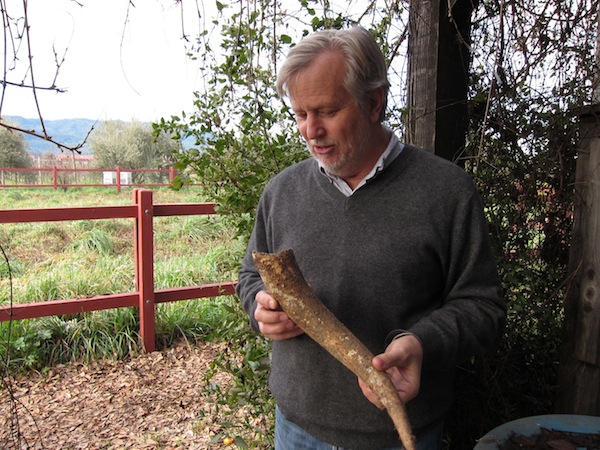Adam Riesling and lobster mac ‘n cheese
Is Riesling the single best wine for food? Not if you’re a carnivore, I suppose. But who eats red meat morning, noon and night? For many of the foods we do love to eat – be it variations of salads in vinaigrettes, wraps, sushi, fish or chicken in salsas, and Asian dishes of all cultures with pronounced sweet, sour, salty and spicy sensations – you have to admit that a typically light, buoyant, refreshingly fruity Riesling does a better job of mixing and matching than, say, most heavy whites like Chardonnay, or heavy reds like Merlot.
 If you’re thinking that “fruity” also means sweet – stop, stop, stop. There are plenty of Rieslings from around the world that are just as dry, or dryer, than most Chardonnays or Sauvignon Blancs. Yet still with that light, crisp, zesty taste that freshens, rather than bludgeons, the palate. And if, to you, Riesling is just not hip, I have this to say: grow up. Sophisticated people (in my book, those who appreciate harmony in their wines, their foods, and their lives) are drinking dry style Rieslings, period.
If you’re thinking that “fruity” also means sweet – stop, stop, stop. There are plenty of Rieslings from around the world that are just as dry, or dryer, than most Chardonnays or Sauvignon Blancs. Yet still with that light, crisp, zesty taste that freshens, rather than bludgeons, the palate. And if, to you, Riesling is just not hip, I have this to say: grow up. Sophisticated people (in my book, those who appreciate harmony in their wines, their foods, and their lives) are drinking dry style Rieslings, period.
The source of the world’s finest dry Rieslings is indubitably Alsace, France. Some Alsatian Rieslings can be lean, dry, almost austere (Marcel Deiss and F.E. Trimbach being classic examples); some are kinder, more gently dry (like those of Dopff au Moulin and Hugel); some, strongly minerally and edgy (Domaine Ostertag and Kuentz-Bas); and some, as huge, expressive, even as oily and dense as any Chardonnay (Zind-Humbrecht and Domaine Weinbach often push the envelope like that).
The biodynamically grown Rieslings of Jean-Baptiste Adam fall somewhere between the gentle and big, expressive styles, and are great introductions for neophytes in general because they capture the purer, fruit focused side of the grape. The 2006 Jean-Baptiste Adam Riesling Réserve (about $22) actually starts with a whisper of residual sugar at the tip of the tongue, progressing into a chubby, bouncy, medium-full, glycerol textured fruitiness defined by floral, peach juice aromas, finishing fresh, clean, and just a tiny bit off-dry.
What wine with mac ‘n cheese? For simpler, cheddary servings of this everyday dish, I have to say that lighter, $10-$16 reds – like Rosso di Montalcino from Italy, Rioja from Spain, and more easy drinking California Zinfandels and Cabernet Sauvignons – do just fine. Smack it around with some cayenne pepper, and a $10 Australian Shiraz does the trick.
But what happens when the inner chef in you wants to plush up the macaroni with things like sweet, meaty Maine lobster? Yummers, but all of the sudden you’re in need of a plush white wine with enough body to absorb the cheese, and the acidity to zest up the lobster. This, of course, is a job for big, crisp, juicy Riesling like Jean-Baptiste Adam’s.
Here is a recipe for a Lobster Mac ‘n Cheese that, admittedly, involves a lot of steps; delicious, but not exactly a dish you can whip up from scratch after coming home from work at 6:00 and the kids want to eat right now. However, something the family might enjoy even more, for both expedience and economy, is this utterly do-able recipe for Crawfish Mac ‘n Cheese. In either case, I’m prescribing a match of dry style Alsatian Riesling.





Comments
Post a Comment